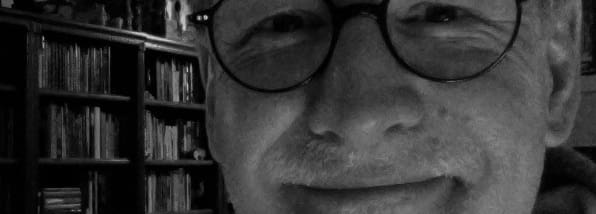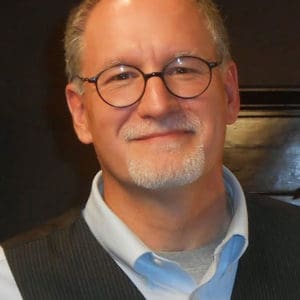In the late 1980s, many Evangelical Churches engaged in what was then-called the Seeker Movement. Essentially, it was a well-intentioned effort by churches to use a variety of marketing principles and programs to draw people inside. To an extreme, some churches went out of their way to avoid any resemblance to traditional churches at all – abandoning the word “church” in their names, or meeting in functional-looking buildings. Worship services became evangelistic tools, incorporating the latest media trends, music and styles of preaching.
In 1985, I moved from a very traditional Baptist church in Maryland to Southern California. Looking back, I suffered a form of culture shock as I encountered Christians who didn’t believe the same things I believed, nor lived out their faith the way I’d understood Christians ought to. My assumptions about all I had understood as a traditional Baptist were shaken, at first in very superficial ways and then at the deepest levels.
On the surface, I had to adjust to the physical environment for worship, as many churches weren’t like any Baptist Church I’d ever seen. We met in high schools and warehouse-type buildings. There were no Sunday evening services, nor Wednesday prayer meetings. Instead they had multiple Sunday morning services and offered “cell groups”, individual Bible studies that met in homes, during the week. The idea was to create the sense of community that was lost in the huge mega-assemblies.
To further demonstrate my provincial thinking, I was aware that the men dressed as if they were headed straight for the golf-course as soon as the church service ended, as if they’d simply dropped by church on the way. Worse, for me, the women dressed as if they were on their way to the beach. I was bewildered to suffer greater temptations to lust in church than anywhere else. Imagine that. (Well, no, don’t imagine that.)
I didn’t purposefully attend overt Seeker-type churches, but the influence of the Seeker Movement hit most other Evangelical churches. The music was hip, the Pastors wandered the stage like Phil Donohue (look him up, younger readers), the entire service was configured to be relevant in the trendiest ways. It took some getting used to. And I wondered if the whole approach had gone too far.
For example, I vividly recall taking communion in one church, using grape juice and Goldfish Crackers (I think the sermon was about being “fishers of men”). In another church, the “sermon enhancer” was a performance by people dressed as the California Raisins singing “I Heard It Through The Grapevine.”
 Yes, I know. Questionable taste is not held exclusively by any one group of Christians. And some could argue that those two experiences were extreme. Unfortunately, they weren’t. The superficiality of the services pushed me to a deeper feeling of alienation. I soon found that the more I tried to engage in church, the less engaged I felt. I had wandered into what was, for me, a spiritual wasteland with churches on every corner positioning themselves like spiritual 7-11s. Disposable, fashionable worship styles left me feeling disenfranchised.
Yes, I know. Questionable taste is not held exclusively by any one group of Christians. And some could argue that those two experiences were extreme. Unfortunately, they weren’t. The superficiality of the services pushed me to a deeper feeling of alienation. I soon found that the more I tried to engage in church, the less engaged I felt. I had wandered into what was, for me, a spiritual wasteland with churches on every corner positioning themselves like spiritual 7-11s. Disposable, fashionable worship styles left me feeling disenfranchised.
Without being conscious of it, I felt that an encounter with God ought to be timeless, operating beyond Power-Point Praise and Consumer-based Church tactics. I found myself going to church less and living out Sola Scriptura more and more: just me and my Bible. Who needed church? I was yearning for something, though I didn’t know then what it was.
Though I considered it a wasteland, the time wasn’t wasted. The realization that my Baptist theology wasn’t common to all Christians caused me to think seriously about my theological assumptions. What did it really mean to follow Christ? What governed Christian sensibilities if so many people, earnestly reading their Bibles, could draw such different conclusions about the essentials of the faith? And what did it say to unbelievers when, to lure them in, churches had become all about them, vying for their business like any other entertainment company? If God was trendy and hip today, what would He be tomorrow when He appeared to be wearing spiritual bell-bottoms or a New Wave tie or a Grunge-Rock haircut? Shouldn’t transcendence win out over trendiness? But what church was willing to risk its audience to that truth? I wondered as I wandered.
One evening my wife and I drove past a Catholic Church and I thought, if that church has been around for a couple of thousand years, maybe there’s something going on in there I should investigate. So we stopped in to look. A church meeting was going on. We saw beautiful statues and an altar and a small group of people playing acoustic guitars and singing songs most Protestant churches had abandoned in the early 1970s. We turned around and walked back out.
It would be more than a decade before I’d engage with the Catholic Church again. But I needed more preparation before that could happen. My time in the wilderness led me to a bridge.
Art: Wasteland Once productive farmland, this land bordering the Cut-off Channel (marked by the line of trees in the far distance) is now annexed to the recycling plant, 2007-10-07; Wikimedia Commons.





